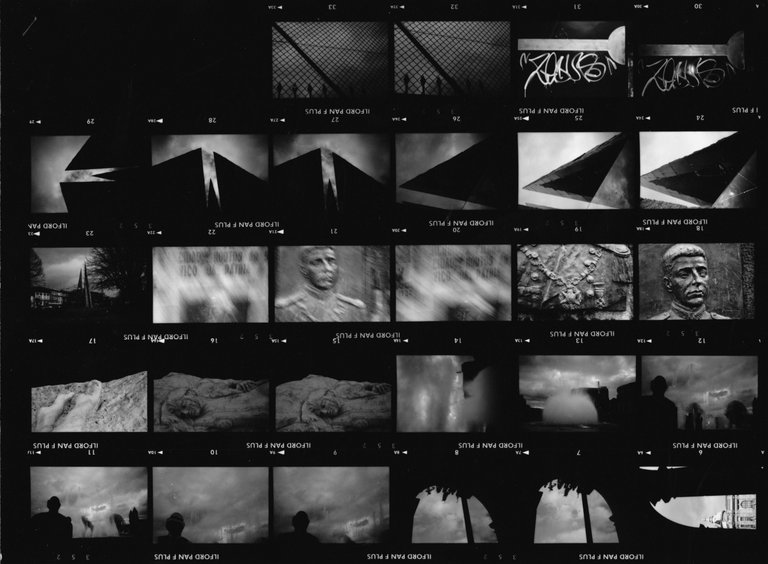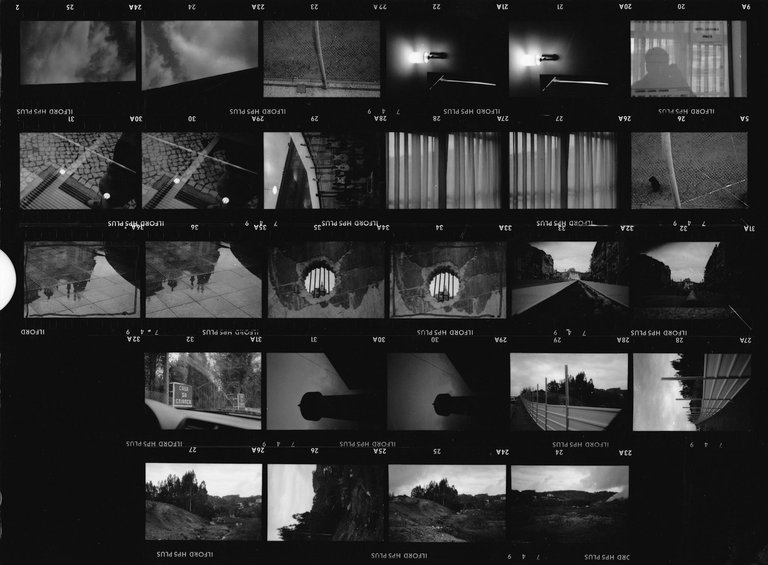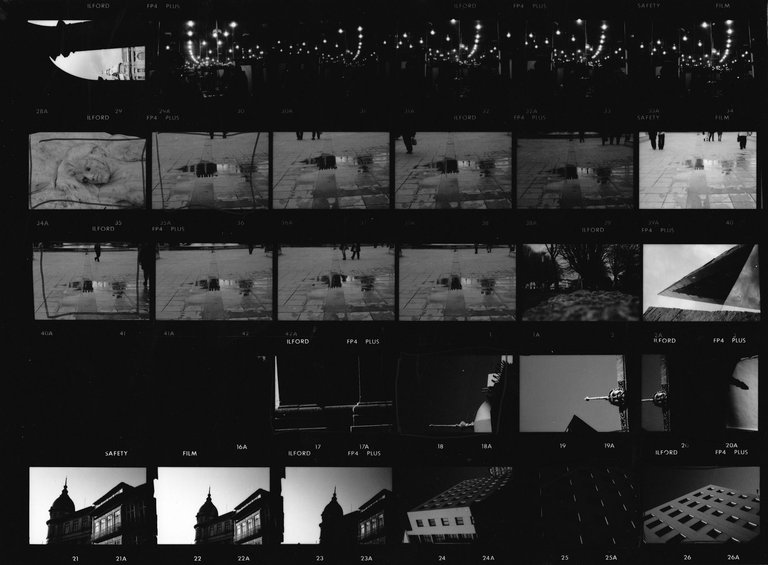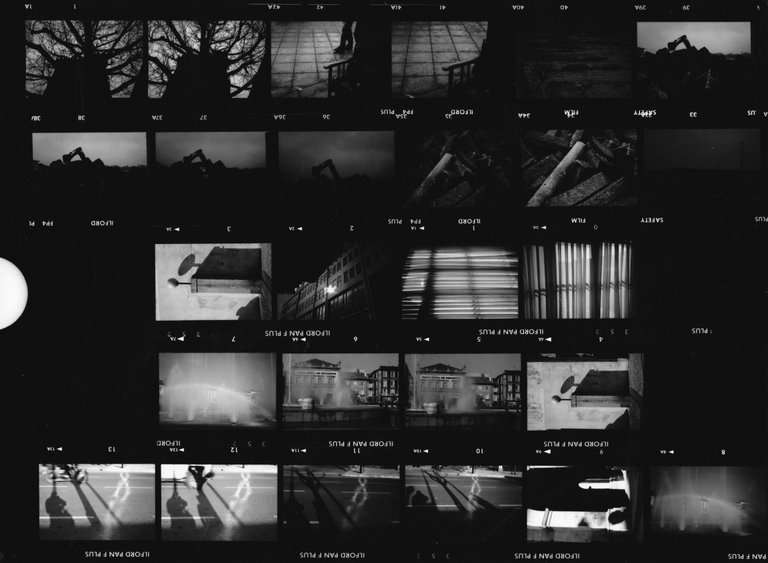Contact Sheet [ENG-PT]

After the process of developing the photographic film, the negative, it is important to make a contact sheet in order to organize the printing workflow. In other words, choosing the photos to print.
This makes it easier to see the result in positive form and protects the film, given its fragility and the care we must take not to damage it. Any dust or scratches on the film will interfere with the proof.
The contact is direct, the various strips of film must be placed on a sheet of photographic paper, with a glass on top, and receive light from the enlarger. This is followed by the chemical process: developer, stop bath, fixer, washing and drying.
Translated with DeepL.com (free version)




Depois do processo de revelação da película fotográfica, o negativo, é importante fazer uma prova de contato para organizarmos o fluxo de trabalho de impressão. Ou seja, escolher as fotografias para imprimir.
Temos mais facilidade visualizar o resultado em positivo e protegemos a película, atendendo à sua fragilidade e cuidado que devemos ter para não o danificar. Qualquer pó ou risco vai interferir na impressão.
O contato é direto, as diversas tiras da película devem ser colocadas em cima de uma folha de papel fotográfico, com um vidro em cima, e receber luz do ampliador. Posteriormente segue o processo químico: revelador, banho de paragem, fixador, lavagem e secagem.

Obrigado por promover a Língua Portuguesa em suas postagens.
Vamos seguir fortalecendo a comunidade lusófona dentro da Hive.
wow what a series.
thank you for the info.
i never did this kind of work. i'm still scanning my films even i develop the roll by myself i never user a real darkroom.
!PIZZA
Thank you very much.
Yes, this procedure is for analog laboratory work.
Currently, I mostly just develop the film and scan it to edit digitally for online publications.
i see :-)
$PIZZA slices delivered:
@victorbz(1/5) tipped @cryptoreforma
https://reddit.com/r/Darkroom/comments/1epj1vw/ilford_contact_sheet/
The rewards earned on this comment will go directly to the people( @cryptoreforma ) sharing the post on Reddit as long as they are registered with @poshtoken. Sign up at https://hiveposh.com.